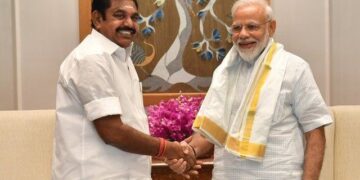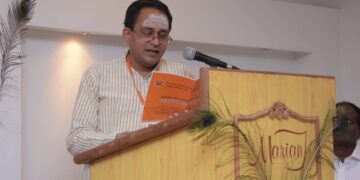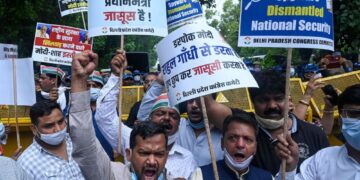 வறுமையையும் துயரத்தையும் அழிப்பதற்காக நாடுகளுக்குக் கடன் வழங்குவதாகக் கூறும் உலக வங்கி, வறுமையை உற்பத்திசெய்யும் பிரதான நிறுவனங்களுள் ஒன்று. உலக நாணய நிதியம் (IMF) மற்றும் உலக வங்கி ஆகிய இரண்டு நிறுவனங்களும் 1944 ஆம் ஆண்டு வறிய மூன்றாமுலக நாடுகளின் எஞ்சிய செல்வத்தையும் சுரண்டி அழிக்கும் நோக்கத்தோடு ஏகபோக மேற்கு நாடுகளின் நலன்களுக்காக உருவாக்கப்பட்டவை. உலகத்தைத் தமது கட்டுப்பாட்டுக்குள் கொண்டுவருவதற்காக அமரிக்க அரசால் உருவாக்கப்பட்ட இந்த இரண்டு இராட்சத நிறுவனங்களும் உலகில் இதுவரை தலையிட்ட நாடுகள் அனைத்தையும் மீள முடியாத வறுமைக்குள் அமிழ்த்தியுள்ளன.
வறுமையையும் துயரத்தையும் அழிப்பதற்காக நாடுகளுக்குக் கடன் வழங்குவதாகக் கூறும் உலக வங்கி, வறுமையை உற்பத்திசெய்யும் பிரதான நிறுவனங்களுள் ஒன்று. உலக நாணய நிதியம் (IMF) மற்றும் உலக வங்கி ஆகிய இரண்டு நிறுவனங்களும் 1944 ஆம் ஆண்டு வறிய மூன்றாமுலக நாடுகளின் எஞ்சிய செல்வத்தையும் சுரண்டி அழிக்கும் நோக்கத்தோடு ஏகபோக மேற்கு நாடுகளின் நலன்களுக்காக உருவாக்கப்பட்டவை. உலகத்தைத் தமது கட்டுப்பாட்டுக்குள் கொண்டுவருவதற்காக அமரிக்க அரசால் உருவாக்கப்பட்ட இந்த இரண்டு இராட்சத நிறுவனங்களும் உலகில் இதுவரை தலையிட்ட நாடுகள் அனைத்தையும் மீள முடியாத வறுமைக்குள் அமிழ்த்தியுள்ளன.
இலங்கை, இந்தியா, ஆபிரிக்க நாடுகள், லத்தின் அமரிக்க நாடுகள் போன்ற காலனி ஆதிக்கச் சுரண்டலிலிருந்து புதிய காலனியத்திற்குள் மாற்றுவதற்கு 60 களில் இந்த இரு இராட்சத நிதி நிறுவனங்களும் உதவி புரிந்தன. முதலில் எண்ணை விலையை அதிகரித்து காலனி ஆதிக்கத்திலிருந்த நாடுகளின் தேசிய மூலதன வளர்ச்சியைத் தடுக்க உலக வங்கி உதவிபுரிந்தது. பின்னதாக வளர்ச்சிக்கு நிதி வழங்குவதாக வறிய நாடுகளுக்கு இரண்டுவீத வட்டிக்கு நிதி வழங்கிய இந்த நிறுவனங்கள் பத்து ஆண்டுகளுக்கு உள்ளாக 1980 இல் வட்டியை 18 வீதமாக உயர்த்தின. இந்தக் கடனை மீளச் செலுத்த முடியாத நிலைக்கு நாடுகள் வந்து சேர, அதே நாடுகளின் உள் நாட்டுப் பொருளாதாரத்தை மறு சீரமைக்கப் போவதாக உலக வங்கி நிபந்தனை விதித்தது. மக்கள் சொத்தைத் தனியார் மயப்படுத்தல், அத்தியாவசியப் பொருட்களின் விலையை உயர்த்தல், வழங்களை குறைந்தவிலையில் பல்தேசிஅ நிறுவனங்களுக்கு விற்றல் போன்ற புதிய நிபந்தனைகள் விதிக்கப்பட்டன.
 மக்களின் சொந்த நிலங்களும், மண்ணும் வழங்களும், இந்த நிறுவனங்களின் கடனை மீளச் செலுத்துவதற்காக அவை கூறும் நிறுவனங்களால் கொள்ளையடிப்பதற்காக விற்கப்பட்டன. மழைக் காடுகளும், வழமான நிலங்களும், அழகிய சோலைகளும், பெறுமதி மிக்க கனிமங்களும் கொள்ளயடிக்கப்பட்டு அமரிக்காவிலும் ஐரோப்பாவிலும் நிலைகொண்டுள்ள பல்தேசிய முதலாளிகளின் கஜானாக்களை நிரப்பின. அவர்களுக்குத் தரகு வேலை பார்த்த உள்ளூர் முதலாளிகள் மக்களின் பிணங்கள் மீது வாழ்வாங்கு வாழ்ந்தனர். அழகிய உலகத்தின் ஒரு பகுதிய அழித்து ஆயிரமாயிரமய் மக்களைக் கொன்று இன்னும் அமரிக்காவில் குடிகொண்டுள்ள உலக வங்கி இத்தனை அனர்த்தங்களின் பின்னும் வறுமையை ஒழிப்பதாகப் பீற்றுகின்றது.
மக்களின் சொந்த நிலங்களும், மண்ணும் வழங்களும், இந்த நிறுவனங்களின் கடனை மீளச் செலுத்துவதற்காக அவை கூறும் நிறுவனங்களால் கொள்ளையடிப்பதற்காக விற்கப்பட்டன. மழைக் காடுகளும், வழமான நிலங்களும், அழகிய சோலைகளும், பெறுமதி மிக்க கனிமங்களும் கொள்ளயடிக்கப்பட்டு அமரிக்காவிலும் ஐரோப்பாவிலும் நிலைகொண்டுள்ள பல்தேசிய முதலாளிகளின் கஜானாக்களை நிரப்பின. அவர்களுக்குத் தரகு வேலை பார்த்த உள்ளூர் முதலாளிகள் மக்களின் பிணங்கள் மீது வாழ்வாங்கு வாழ்ந்தனர். அழகிய உலகத்தின் ஒரு பகுதிய அழித்து ஆயிரமாயிரமய் மக்களைக் கொன்று இன்னும் அமரிக்காவில் குடிகொண்டுள்ள உலக வங்கி இத்தனை அனர்த்தங்களின் பின்னும் வறுமையை ஒழிப்பதாகப் பீற்றுகின்றது.
இலங்கையில் புலிகளுக்கு எதிரான யுத்த காலத்தில் பயங்கரவாதத்தை அழிப்பதாகக் கூறிய இலங்கை பாசிச அரசின் இராணுவப் பொருளாதாரதிற்குத் தீனி போட்ட நிறுவனனங்களில் இந்த இரண்டு நிறுவனங்களும் பிரதானமானவை.
இப்போது மீண்டும் இலங்கைக்கு 200 மில்லியன் அமெரிக்க டொலர் கடனுதவி உலக வங்கி வழங்கியுள்ளது. நாட்டின் சுகாதாரத்துறையை மேம்படுத்தும் நோக்கில் இந்த கடன் தொகை வழங்கப்பட்டுள்ளது எனத் தெரிவிக்கும் வங்கி வெகு விரைவில் இலவச மருத்துவத்தை முற்றாக அழித்து துடைத்தெறிந்துவிடும்.
வறுமையில் செத்துப் போகும் மக்கள் போராடாமலிருப்பதற்காக தன்னார்வ நிறுவனங்களும் ஐக்கிய நாடுகளும் உதவி என்ற பெயரில் எலும்புத் துண்டுகளை உணவாகவும் காலாவதியான மருந்தை இலவசமாகவும் வழங்கும்.
புலம் பெயர் நாடுகளிலிருந்து ஐக்கிய நாடுகளைக் கூட்டிவந்து தமிழீழம் பிடித்துத் தருவதாக ஐந்தாம் படை தமிழ் சமூக விரோதிகள் கூக்குரலிட்டுக்கொள்வர்.











Sri Lanka provides free universal healthcare. Yes, one of the few countries in the world with free healthcare and education, both of which have been national priorities for decades.
■Government Hospitals: 593
■Private Hospitals:197
■Qualified Doctors: 17,129 (a doctor per 1,187 persons)
■Qualified Nurses: 29,871 (a nurse per 683 persons)
■Average Life Expectancy: 75 years
■Infant Mortality: 9.5 per 1000 births (a regional low)
Sri Lanka’s healthcare sector, along with the basic health indicators of the island, has over the past few decades risen above the regional averages. Sri Lankans enjoy a life expectancy of 77.4 – the highest in the region – compared to 73.9 of India and 47.5 in Afghanistan. The infant mortality rate remains 8.5 per 1,000 live births, down from 11.2 in 2005. Maternal mortality is 41.6 per 100,000 live births. Around 84 percent of the population has access to safe drinking water.
The proposed spending for healthcare under the current Appropriations Bill stands at Rs. 125 billion. This is a significant increase compared to last year’s spending of Rs. 74.5 billion. The figures are for central government spending only, and do not include spending through the provincial councils or the private sector.
Profile of the Island’s Health Sector
According to the World Health Organisation, the country’s health indicators show a steady improvement over recent decades, particularly in maternal and infant mortality, and life expectancy. “The improvement of these indicators is predominately attributed to the maternal and child healthcare programme implemented nationally as an integral component of the state healthcare system. However, while post neonatal mortality has declined significantly, prenatal and neonatal mortality efforts have been less successful,” the WHO stated in a report on Sri Lanka’s health sector.
“Nutritional status has improved but remained a serious problem among the poorer and vulnerable communities, and even on average is unsatisfactory. This brief analysis is based on information related to the whole country and does not address the disparities that exist among provinces. But when the provincial or district level figures on infant and maternal mortality are compared, there seems to be great disparities, some of which may be due to differential under-reporting or the referral of cases. In particular, information on the conflict affected areas and the estates shows significant variation among and within the provinces,” the report further said. Concerns of these were addressed during the budget speech by the President last week.
Forecasted Statistics and Aid
In the same manifesto, the primary policy document of the current government, it forecasts the life expectancy to rise to 86 for males and 80 for females by the year 2020. It also expects the child mortality rate to drop to 6.0 (per 1,000 live births), infant mortality rate to 4.5 (per 1,000 live births), one doctor and 1.5 nurses per 1,000 people, for all births to happen under professional care.
The future strategies, as foreseen by the policy document, include minimising communicable diseases and non-communicable diseases, increasing resources for preventive care, improving efficiency of healthcare delivery services, developing and maintaining Centres of Excellence in Cardiology, Oncology, Neurology and Neuro-trauma, improving medical research, effective mental health services, services for the elderly, and a more regulated private healthcare sector.
Meanwhile the World Bank says that they are currently in negotiations with the Government of Sri Lanka about the funding that would be provided, and that their approach is to support the Government’s program to modernize the health system in SriLanka, by contributing to the Health Sector’s budget. This means that the Bank’s funds can be allocated to any part of the Government program according to need. However, within the Government’s program, the Bank proposes to disburse its funds based on selected results with a special focus on nutrition, non-communicable diseases and system improvement modernization.
The funding and support from the World Health Organisation too will be directed to the same areas. The WHO will contribute approximately US$ 3 million over the next year, and will focus on communicable diseases, non-communicable diseases, maternal health, emergency preparedness and response, and enhanced partnerships and resource mobilisation.
Read in Read in full…
The State Of Sri Lanka’s Healthcare
http://www.thesundayleader.lk/2012/11/10/the-state-of-sri-lankas-healthcare/